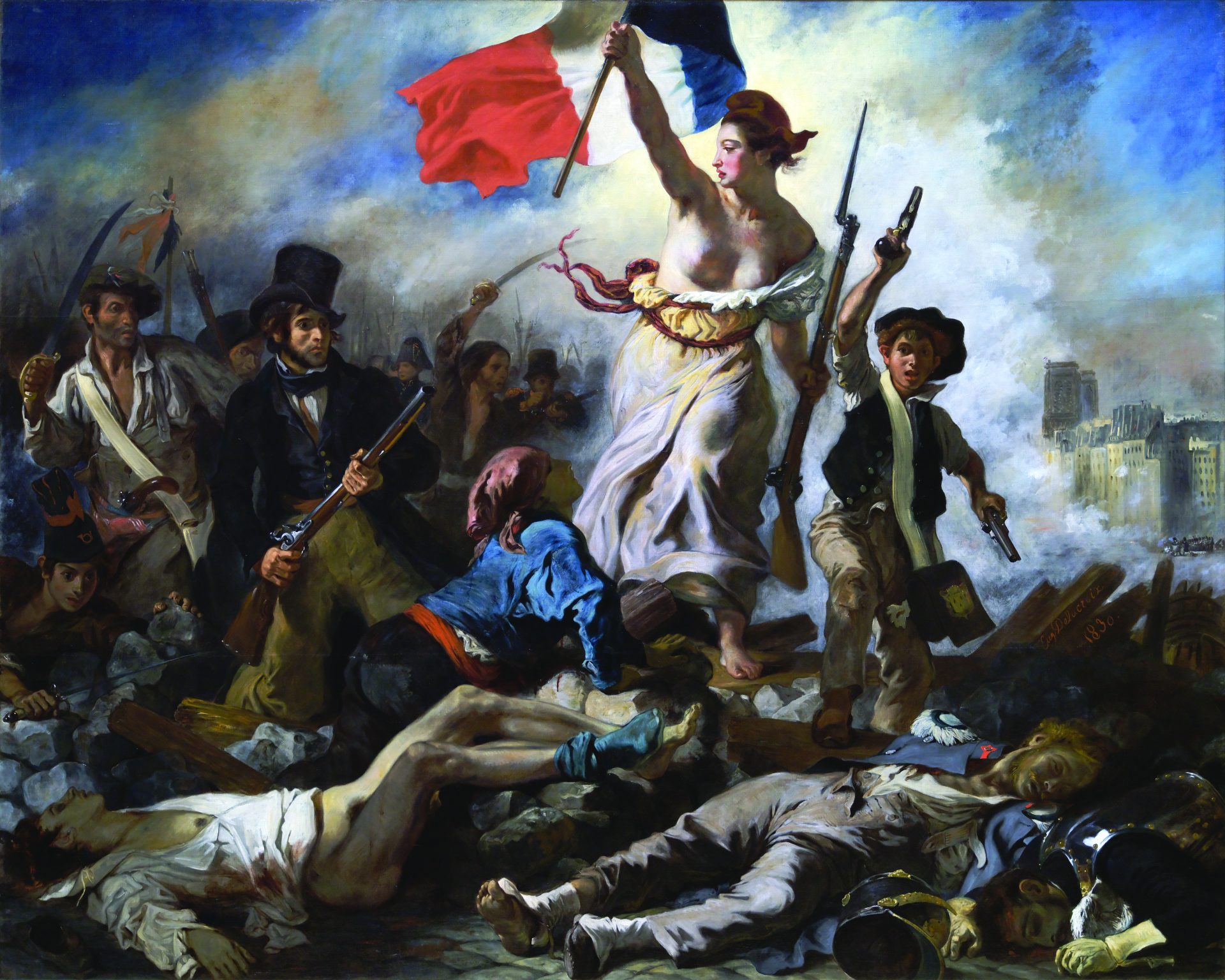
For much of the past eight years, many liberal intellectuals have seemed less inclined to support blue-collar Americans in their struggles than to look askance at their presumed political, consumer, and cultural preferences. Why did so many white working-class voters support George W. Bush in 2000 and 2004? Why do so many moderate-income Americans not only shop at Wal-Mart but embrace it as a model of enterprise—even though it drives down wages and benefits for both its own workers and those at its suppliers worldwide? And why does so much popular culture, from Fox News to talk radio, reflect a right-wing populism that ridicules professorial politicians from Al Gore to Barack Obama but reveres CEOs from Jack Welch to Donald Trump?
For readers seeking a unified field theory for the origins and appeal of right-wing populism, the most popular and persuasive was offered in Thomas Frank’s 2004 best seller What’s the Matter with Kansas? Frank indicted working-class rural Kansans for abandoning their populist economic instincts in favor of their conservative cultural predispositions. Thus, he colorfully complained, these voters regularly reject the progressive Democrats who have their best interests at heart because they perceive progressives to be “latte-drinking, sushi-eating, Volvo-driving” elitists. Instead, these blue-collar Kansans support “grandstanding Christers” who favor corporate elites against everyday Americans. Many liberal commentators have applied the logic of Frank’s account in order to explain the country’s stubborn red-blue divide, which has turned working-class redoubts like West Virginia into Republican mainstays. Cultural identifications, not economic interests, are at work—or so we’re told.
Now come two scholarly studies that offer counterpoints to the view that culture trumped economics during the era of conservative backlash. In Trucking Country, historian Shane Hamilton directly challenges Frank’s thesis. “Conservatives may or may not have ‘won the heart of America,’ as Thomas Frank’s subtitle declares, but, if they did, it was not by hoodwinking rural Americans into rejecting their own economic interests,” Hamilton writes. “Instead rural Americans’ ideas regarding state intervention in the economy helped shape the broader conservative ideologies of the late twentieth century.” His book explores the growth of independent, nonunion trucking since the 1970s—and the ways that the wildcat-trucking movement produced a wave of economic deregulation from the 1980s on. Once the ideology of deregulation took hold in Washington, Hamilton observes, it created optimal conditions for ongoing conservative rule: defeats for progressive politics, widespread distrust of activist government, and a steep decline in private-sector unionism.
Meanwhile, in A People’s History of Poverty in America, Stephen Pimpare tells the story of how poor people have suffered economic deprivation, social isolation, and scornful treatment by private charities and public programs from colonial America through the current explosion of debt. Pimpare’s book is not about contemporary American politics—it is a sympathetic social history that allows poor people, past and present, to tell their own remarkably similar stories. Among its many valuable lessons, it reflects the attitudes of nonpoor Americans, from the insecure middle class to the more affluent, who have sought to distinguish between the “deserving” and “undeserving poor”—those who actively seek to improve their conditions and those who seem resigned to dependence on public assistance or private charity.
Taken together, the two studies effectively point up how individualism—the notion that your life is exclusively your own responsibility— can cut against the grain of solidarity among the less fortunate players in the US economy. The individualist ethos is by no means a monopoly of the right, but it reinforces conservative aims as it plays out in economic life: It motivates many to seek self-employment, avoid unions, oppose social programs, look down on poor people—and vote for conservative Republicans. Yes, such individualistic economic attitudes often accompany cultural conservatism (although economic individualists such as Barry Goldwater can be libertarians on social issues). But as Hamilton argues explicitly and a close reading of Pimpare’s book implies, much more than cultural identification was at work over the past four decades of right-wing dominance. Economic interests and ideals were central to the consolidation of conservative power.
Hamilton locates the origins of this economic shift far from the think tanks and lobbying offices of Washington: in the ranks of nonunion long-haul truckers who clustered in the rural southern and border states but came to exert an increasing influence over industries ranging from transportation to retail to meatpacking. By organizing their own movements to rival the Teamsters union, staging disruptive protests ostensibly against rising fuel prices but actually against the entire structure of the trucking industry during the energy crisis and stagflation of 1979, and aggressively lobbying for deregulation, the independent truckers set the stage for the fiercely antiunion economic policies of the Reagan administration. The rise of the nonunion truckers and the positions they promoted contributed, in turn, to the growth of nonunion companies such as Wal-Mart and Iowa Beef Packers. As Hamilton shows, these companies won a race to the bottom by slashing wages and lowering prices, emerging as the powerhouses in the cost-cutting consumer economy of the 1990s and beyond.
Pimpare’s informative and insightful history of poverty in America underscores how the ranks of the urban poor have suffered from the ideology of economic individualism. Part of Howard Zinn’s People’s History series, Pimpare’s book stresses the experiences of poor people in this country over the past three centuries, usually as explained in letters, diaries, and books by poor (or formerly poor) people themselves. The better known among them include James Baldwin, Michael Gold, and Jack Conroy. This is a thematic, not a chronological, history, with chapters about hunger, homelessness, the treatment of women and children, and the indignities imposed on those who receive public assistance or private charity. Over the decades, wealthy benefactors have behaved patronizingly toward the poor, and welfare agencies and private charities have presumed them to be cheats or wastrels, even as poor applicants have lined up for hours for scarce low-wage jobs.
Much of this material will be familiar to anyone who has grown up in or around poverty, worked for social-service agencies, or read the works of Jacob Riis, Michael Harrington, Barbara Ehrenreich, or William Julius Wilson. A People’s History of Poverty is most valuable for its focus on individual experiences and its anecdotal detail. Pimpare recounts stories that no social satirist could make up, such as wealthy suburban philanthropists serving ham sandwiches to Jewish youngsters from New York at the turn of the past century and complaining that some of the kids refused to eat their lunch. But Pimpare is also able to show the ways in which poor Americans managed to challenge and overcome the more baleful effects of economic individualism. Poor people from very different backgrounds have always relied on one another to survive, creating networks of community institutions and mutual-assistance societies. As Jack Kirkland, best known for the stage adaptation of Erskine Caldwell’s novel of southern poverty, Tobacco Road, once said, “When you’re in trouble, you never go to rich friends to help you, you go to poor friends.”
Still, despite the fresh terrain each author examines, they nonetheless press their arguments a bit too far. An instructor in American politics and social-welfare policy at Yeshiva College and the Wurzweiler School of Social Work, Pimpare is so sympathetic to the poor that he seems reluctant to discuss the ways in which poverty damages its victims, as other observers such as Harrington and Wilson have readily acknowledged. Nor does Pimpare explore why some people study, work, build businesses, and engage in social struggles that enable them to emerge from poverty while others are ground down by deprivation and despair. He does include a chapter about work, but he remains comparatively silent about the social movements of the working poor, including the union-organizing campaigns among hospital workers, building service workers, farm workers, and others in low-wage sectors of the economy. By failing to focus on those workers, Pimpare misses an opportunity to emphasize how much most poor people have in common with those who are struggling to stay in the middle class. Most Americans are much more sympathetic to the working poor—those who, in the Reverend Jesse Jackson’s phrase, “take the early bus”—than the dependent poor.
Similarly, Hamilton’s saga of independent trucking’s uprising likely overemphasizes its importance. Independent truckers almost certainly were not the most powerful force behind deregulation and deunionization. Other forces were at work—and other stories need to be told about how the American economy made what the economists Barry Bluestone and Bennett Harrison called “the great U-Turn” from providing high wages to promoting low prices. For instance, during the 1970s, much of corporate America chose to challenge unions, many liberal public officials embraced deregulation, and many working Americans did begin to vote according to their cultural preferences, not their paychecks. And since 1980, despite the earlier defection of rural white voters from the New Deal consensus, the more politically influential of swing voters remain urban and suburban Catholics—those famous recruits to the ranks of the Reagan Democrats who later supported Bill Clinton.
As for the economic individualism that Hamilton emphasizes, it frequently coexists with not only cultural conservatism but also a genuine economic populism. Even as white working-class voters have spurned some legacies of Great Society liberalism, they continue to join unions when they can, support New Deal programs that help working people, their children, and retirees—and vote for progressive candidates who are more closely identified with social insurance than with social engineering. Independent trucking is for Hamilton what Kansas was for Frank—the locus that shows a part of what has gone wrong with American politics. In the aftermath of the fall financial crisis and in the midst of resurgent resentment of the damage wrought by Wall Street elites, perhaps we will get a better sense of the full picture.
David Kusnet was chief speechwriter for President Bill Clinton from 1992 through 1994. He is the author of Love the Work, Hate the Job: Why America’s Best Workers Are More Unhappy Than Ever (Wiley, 2008).






